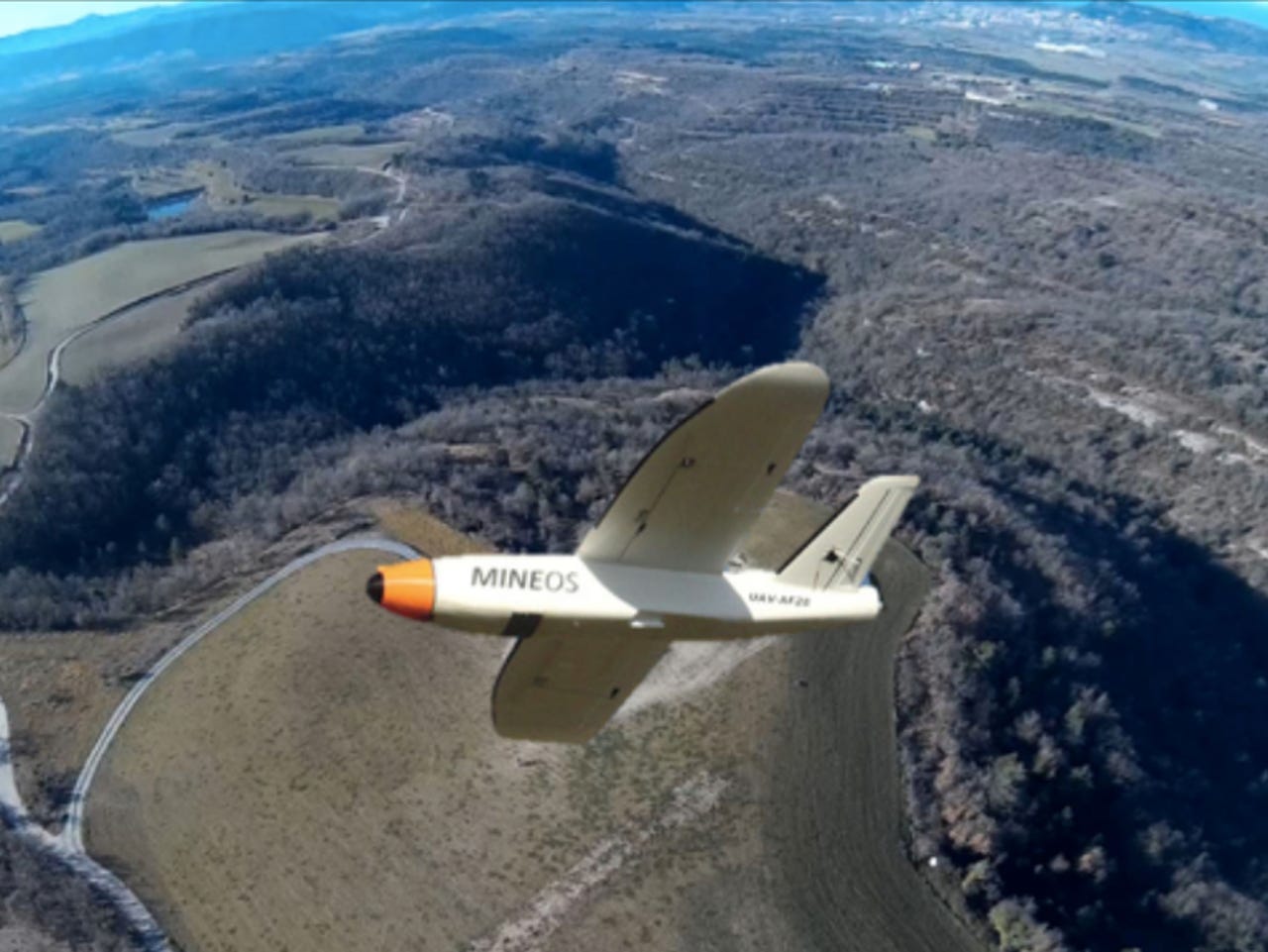Come fly with me: Why Catalonia is really seeing drones take off


Catalan drone maker CATUAV's MINEOS UAV, initially developed for landmine detection in Bosnia, flying over the BCN Drone Center at Moià.
While on the consumer side, first-person-view drone racing is growing in popularity, manufacturing the devices themselves remains a serious business. The market for unmanned aerial vehicles (UAV) worldwide expected to exceed €8bn ($9bn) over the next three years, with annual growth rates above 20 percent.
The US and China may lead in the manufacture of these aircraft but Spain's Catalan industry has managed to carve out a niche in the international market.
According to Droneii, a German market research company specializing in professional drones, five models manufactured by the Catalan company CATUAV, based in Moià, 60km from Barcelona, are among the top 10 in the world in various categories.
So how can a company of six workers compete with Chinese and American tech giants? According to Jordi Santacana, founder and CEO of CATUAV, the key factors are long experience in the field and proprietary technology that has proven effective and reliable.
"We've worked with aerial platforms since the 1980s and had specialized in fixed-wing UAVs by about 1999. Since 2003, we've been carrying on an R&D process that has produced a complete and functional UAV system," he tells ZDNet.
"So, we're probably the oldest drone company in Europe and we work on the constant evolution of our models. That's the key to scaling up the business."
CATUAV offers drone Earth-observation and remote-sensing services in fields as diverse as agriculture, land-mine detection, night-time wildfire detection, and for checking and calibrating instruments designed to be integrated into satellites. It also provides custom courses for managers of companies that want to use drone technology.
A couple of years ago, the company launched the BCN Drone Center, with 2,500 hectares (6,178 acres) of segregated airspace, where UAV systems could be safely tested in all flying conditions, and a bioclimatic building with facilities to make modifications. It is one of the few specialist drone centers anywhere in the world.
Last year, it fostered projects from 55 countries and four continents, says Santacana: "Catalonia has always been a pioneer in the use of new technologies."
Alex Gomar, founder and CEO of Hemav, the largest drone company in Spain and backed by the European Space Agency, believes another factor is key to the emergence of the drone industry in the north-east of the Iberian peninsula: the weather. Gomar says Catalonia has a very good climate zone, which suits UAV operations.
Startup Hemav was founded in 2012, when drones were barely used in Spain and has grown quickly. Today it can count more than 30 employees and headquarters in Madrid and Castelldefels-Barcelona.
Hemav offers remote-sensing and agricultural consulting, inspection of critical infrastructures for the electrical, telecoms, energy and civil- engineering sectors, as well as topographic and cartographic surveys.
For Gomar, the added value that Hemav offers lies in the customization of its drones for specific applications and the use of its own algorithms to process data collected by the vehicles.
"Our platforms take multispectral information, which is processed by our own algorithms to give the farmers the information they need to fertilize crops. This allows an increased production and a reduction of fertilizer costs," explained Gomar.
Yet, he is convinced that the amendment of the Spanish law to cover drones, scheduled for earlier this year but now delayed, can open exciting new market niches, such as building inspections and the control of urban parks.
For the time being, the law in force in Spain is the one adopted in July 2014, allowing aircraft of up to 25kg to record outdoors during the day, in good visibility, outside cities and built-up neighborhoods, within a visual range of not more than 500m from the pilot, and flying not higher than 120m.
CATUAV does not address urban areas as a business field and is working on projects such as flying drones in the higher layers of the atmosphere to cover larger areas.
Despite the restrictions imposed under current laws, Catalonia's Generalitat government believes the drone sector has real potential for generating steady and healthy economic activity.
Read this
Generalitat IT and comms governance secretary Jordi Puigneró is convinced that "drones will be the Catalan aviation industry of the 21st century" and will have a major impact in areas as diverse as firefighting, emergency management, control and maintenance of infrastructure and facilities, logistics or audiovisual services.
The Catalan drone industry will be able to tap into the region's strengths in mobile, big data, the Internet of Things and smart cities, Puigneró says.
Because this integration requires the collaboration of all stakeholders, the Catalan government has launched the CataloniaSmartDrones working group, which includes 25 companies and 16 organizations, including universities, technology centers, research groups, and associations, all working on positioning the region as drone-friendly.
For Puigneró, priority areas for action are the definition of a strategic plan to boost the sector, the coordination of the various actors, promoting research and innovation and seeking European funding, among other initiatives.
If finally approved, the amendment of the Spanish law on drones should bring new business opportunities but also new risks in areas such as privacy, which may not have yet been fully understood.